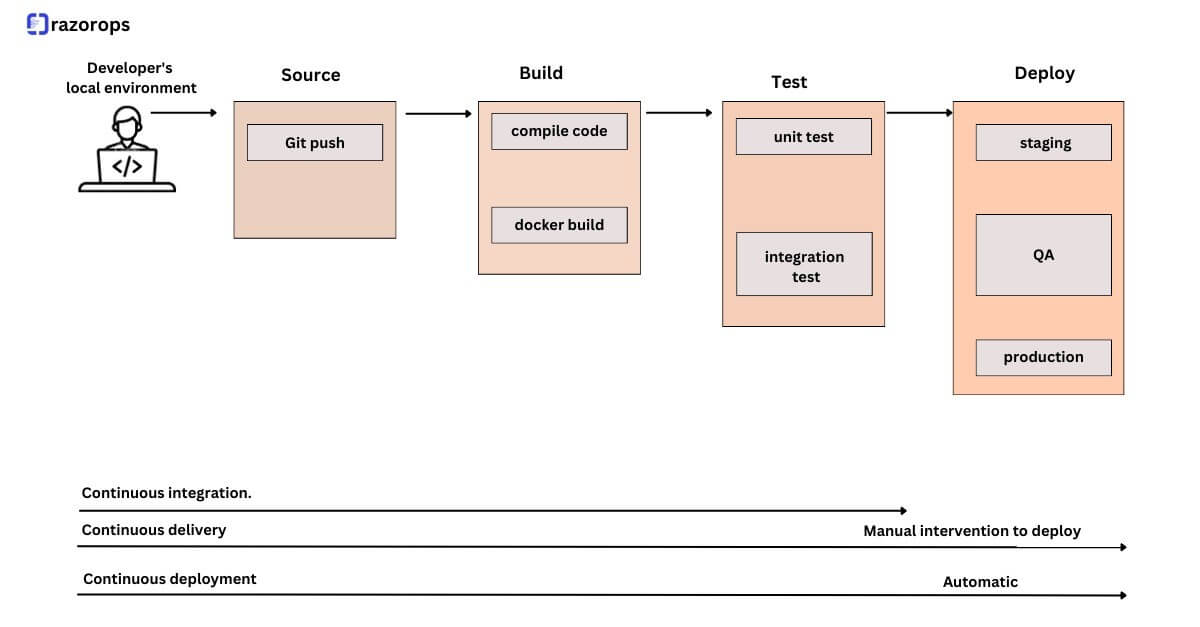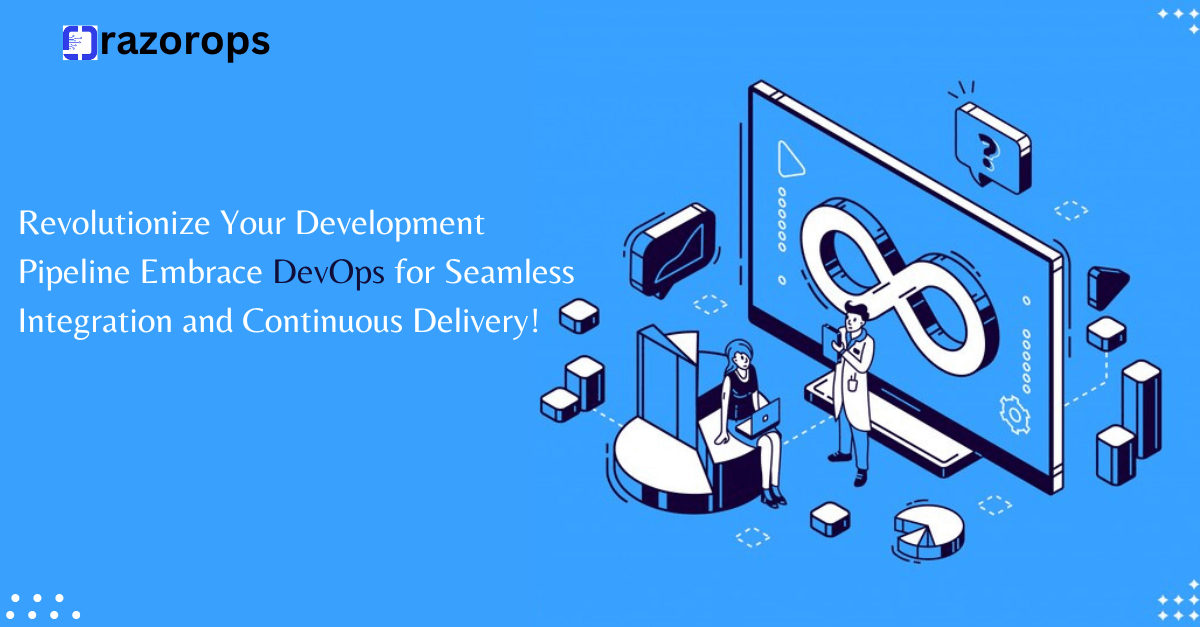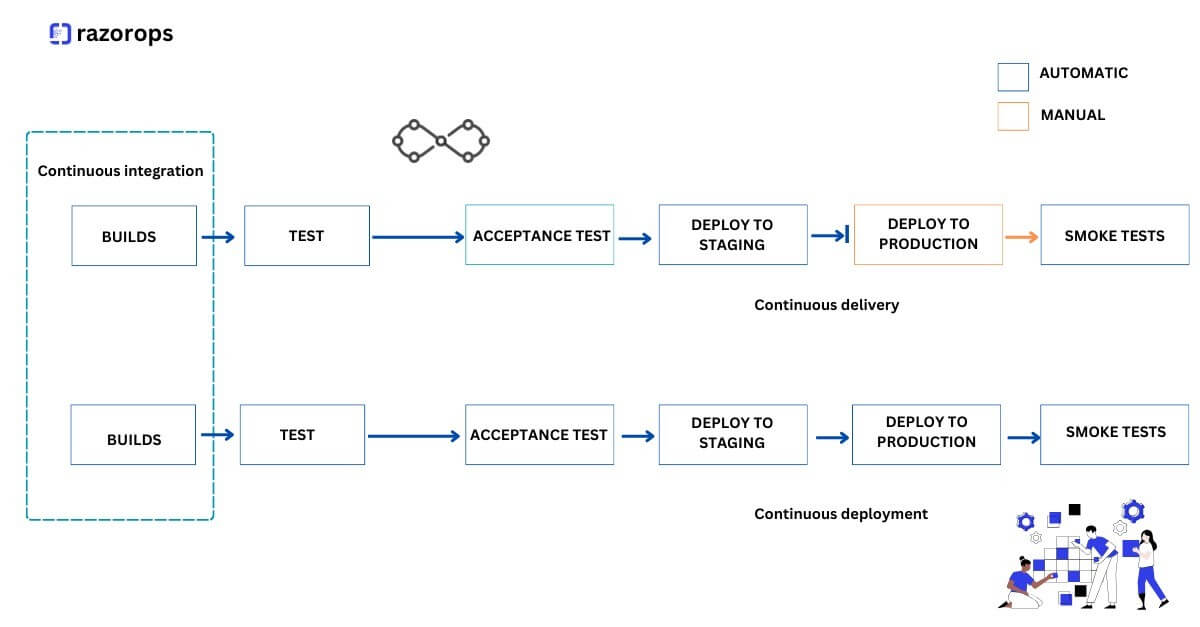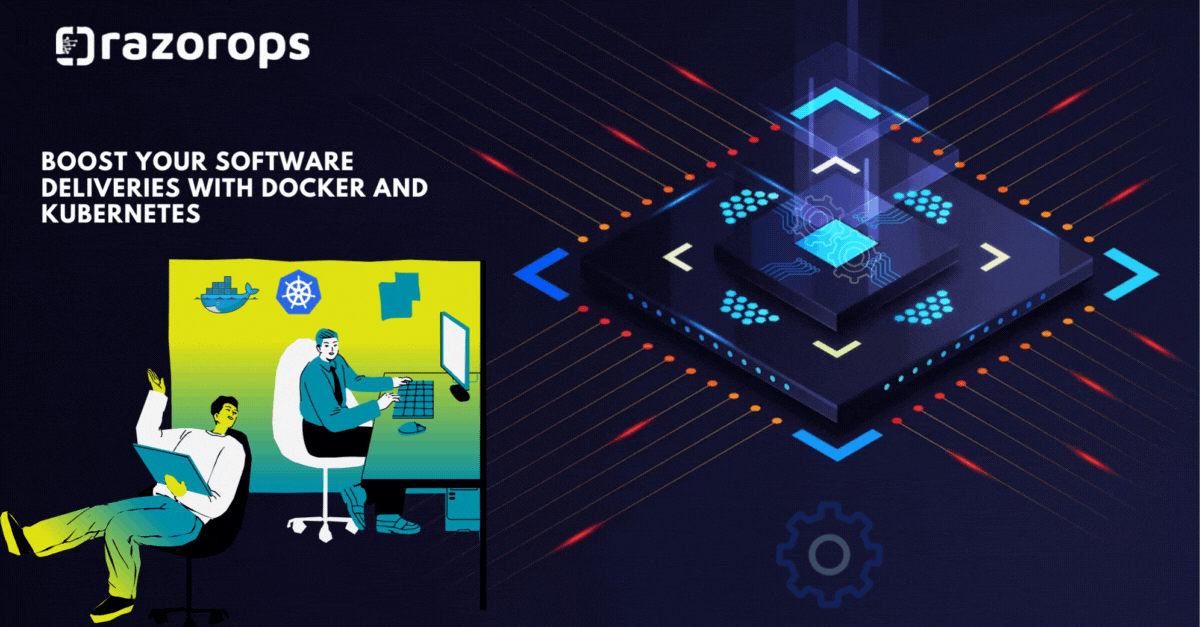Stages of a CI/CD Pipeline

Absolutely, diving into the stages of a Continuous Integration/Continuous Deployment (CI/CD) pipeline can shed light on the software development process’s efficiency. Let’s break it down into stages
Understanding the Stages of a CI/CD Pipeline
In today’s fast-paced software development landscape, delivering high-quality applications swiftly has become paramount. Continuous Integration/Continuous Deployment (CI/CD) pipelines have emerged as a fundamental aspect of modern software development practices. CI/CD pipelines automate the process of building, testing, and deploying code, ensuring efficiency, reliability, and speed in software delivery. Let’s delve into the various stages that constitute a typical CI/CD pipeline.
1. Code Development
The CI/CD journey commences with code development. Developers write code to implement new features or fix bugs. This stage emphasizes collaboration, version control, and adherence to coding standards. Version control systems like Git enable teams to manage changes efficiently, allowing developers to work concurrently on the codebase while maintaining a record of alterations.
2. Commit and Version Control
Developers commit their code changes to the version control repository, triggering the CI/CD pipeline’s initiation. Each commit serves as a potential update to the application. These commits are then merged and processed in the subsequent stages of the pipeline.
3. Continuous Integration (CI)
The CI stage involves automatically building and testing the codebase whenever changes are committed. Tools like Jenkins, Travis CI, or GitLab CI/CD are commonly used for this purpose. The goal is to identify integration issues early in the development cycle. Automated tests, including unit tests, integration tests, and other types of checks, ensure that the newly introduced code functions as expected without breaking the existing codebase.
4. Continuous Deployment (CD)
Continuous Deployment involves the automated deployment of the code to various environments (e.g., development, staging, production) based on predefined criteria. It includes tasks like packaging the application, provisioning infrastructure, and deploying to target servers or cloud platforms. CD tools such as Ansible, Kubernetes, or AWS CodeDeploy aid in orchestrating this phase, ensuring a smooth and consistent deployment process.
5. Testing
Testing is a critical part of the CI/CD pipeline, encompassing different types of tests, including unit tests, integration tests, acceptance tests, and performance tests. Automation plays a pivotal role in executing these tests rapidly and accurately. The objective is to detect bugs or performance issues early in the development cycle, allowing for timely resolution and maintaining the quality of the software.
6. Continuous Deployment/Delivery:
Continuous Deployment involves automatically deploying the tested and approved code changes to production if all tests pass. Continuous Delivery, on the other hand, ensures that the code is always in a deployable state, allowing teams to decide when to release.
7. Deployment Automation:
Using tools like Ansible, Puppet, or Kubernetes, the deployment process becomes automated. It ensures consistency and reliability in deploying applications across different environments, from development to production.
8. Monitoring and Feedback
Post-deployment, monitoring tools are employed to track the application’s performance, user behavior, and system health. Monitoring helps in identifying issues, bottlenecks, or anomalies in real-time. Feedback mechanisms collect information on user experience and application performance, which is then used to improve future iterations.
A well-structured CI/CD pipeline significantly enhances software development practices by automating processes, reducing errors, accelerating delivery, and ensuring a consistent and reliable deployment of applications. Understanding and implementing these stages empower development teams to streamline their workflows, ultimately delivering better software products to users. Follow RazorOps Linkedin Page Razorops, Inc.








